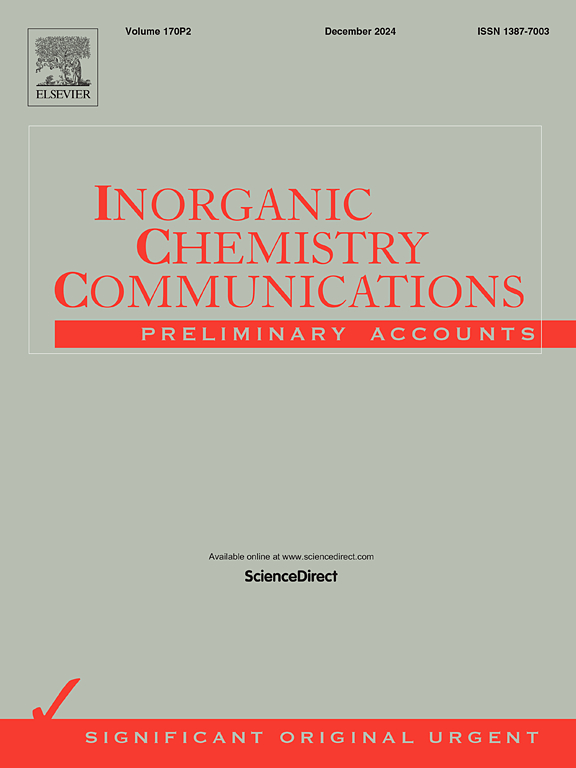Engineering of cobalt impregnated sponge like spinel nickel ferrite as an efficient electrocatalyst for sustained overall water splitting
IF 4.4
3区 化学
Q1 CHEMISTRY, INORGANIC & NUCLEAR
引用次数: 0
Abstract
The substantial exhaustion of energy resources in the present reality limelight to the exigency for a clean and sustainable energy resource and the key solution for this would be electrocatalytic water splitting to produce clean H2. For achieving this objective amending noble metals with non-noble metals as electrocatalysts which are cost effective and earth abundant would serve as a better option. Herein, combustion derived nickel ferrite (NiFe2O4) and cobalt doped nickel ferrite (NiCoxFe2-xO4) nanoparticles were extensively studied for Oxygen (O2) and Hydrogen (H2) evolution reactions respectively. The NiCo0.01Fe1.99O4 and NiCo0.03Fe1.97O4 Co-doped NiFe2O4 electrocatalyst exhibits excellent Hydrogen Evolution Reaction (HER) and Oxygen Evolution Reaction (OER) activity in 1.0 M KOH electrolyte requiring a potential of 1.68 V ( = 455 mV) vs RHE for OER and −0.167 V ( = 167 mV) vs RHE for HER to achieve the benchmark current density of 10 mA cm−2 and −10 mA cm−2 for OER and HER respectively. The best performing electrodes (NiCo0.03Fe1.97O4||NiCo0.01Fe1.99O4) were employed for overall water splitting which at a constant current density of 50 mA cm−2 acquired a cell voltage of around 2.2 V when it was put through the long-term stability test for a stretch of 24 h. Wherein, a slight increase of 30 mV that the initial voltage was spotted after 24 h which is an imperceptible loss. These results demonstrate that the doping of Co metal ions into NiFe2O4 nanoparticles has resulted in an efficient noble metal free electrocatalyst for overall water splitting.

求助全文
约1分钟内获得全文
求助全文
来源期刊

Inorganic Chemistry Communications
化学-无机化学与核化学
CiteScore
5.50
自引率
7.90%
发文量
1013
审稿时长
53 days
期刊介绍:
Launched in January 1998, Inorganic Chemistry Communications is an international journal dedicated to the rapid publication of short communications in the major areas of inorganic, organometallic and supramolecular chemistry. Topics include synthetic and reaction chemistry, kinetics and mechanisms of reactions, bioinorganic chemistry, photochemistry and the use of metal and organometallic compounds in stoichiometric and catalytic synthesis or organic compounds.
 求助内容:
求助内容: 应助结果提醒方式:
应助结果提醒方式:


